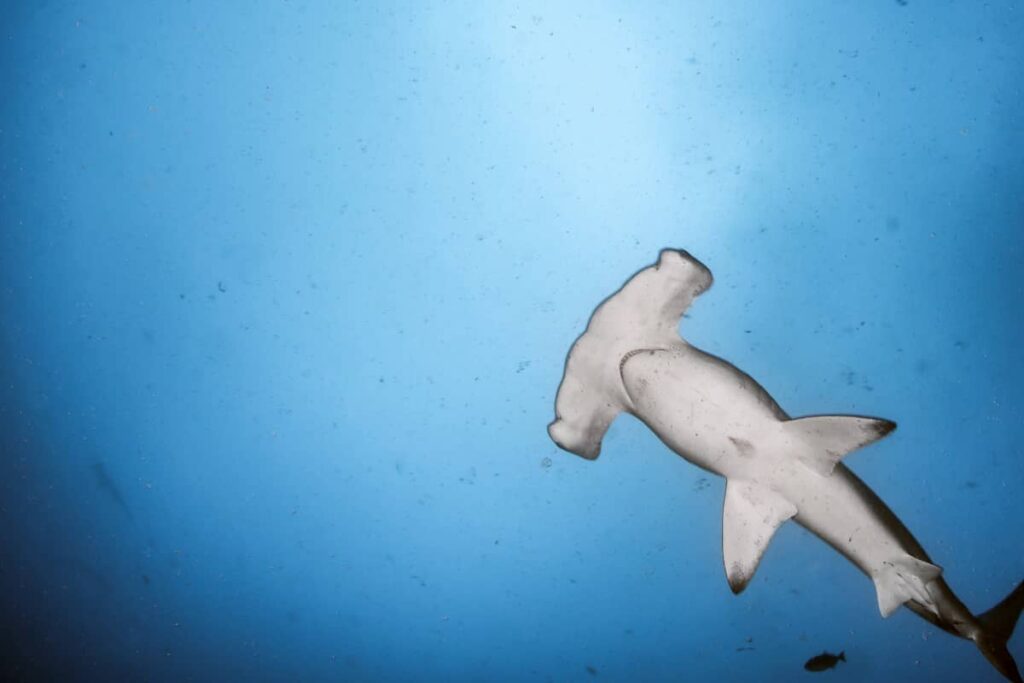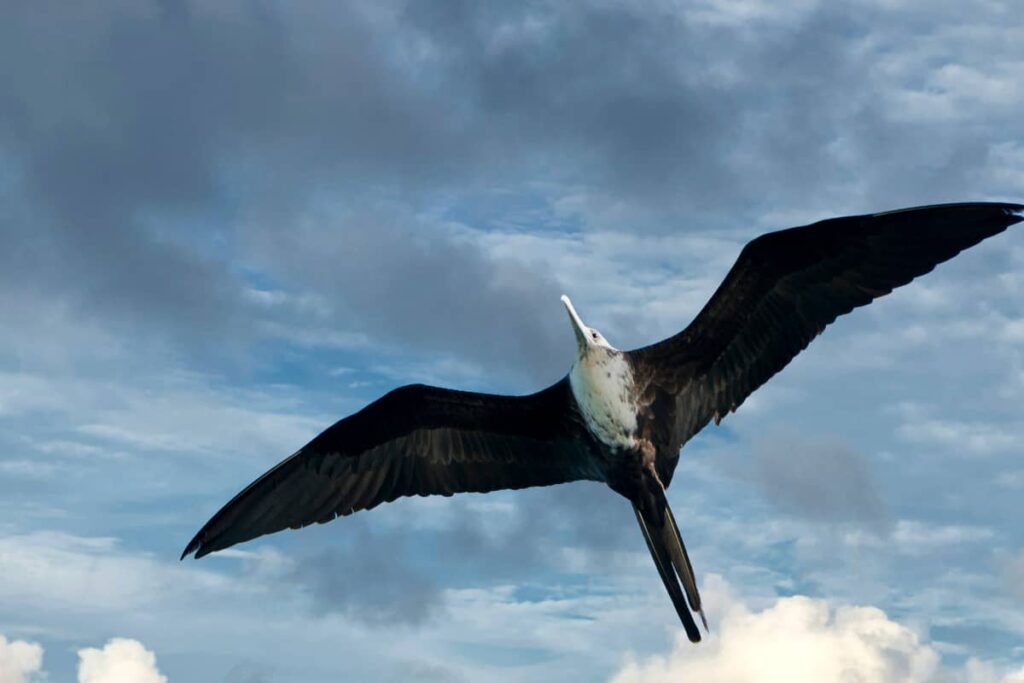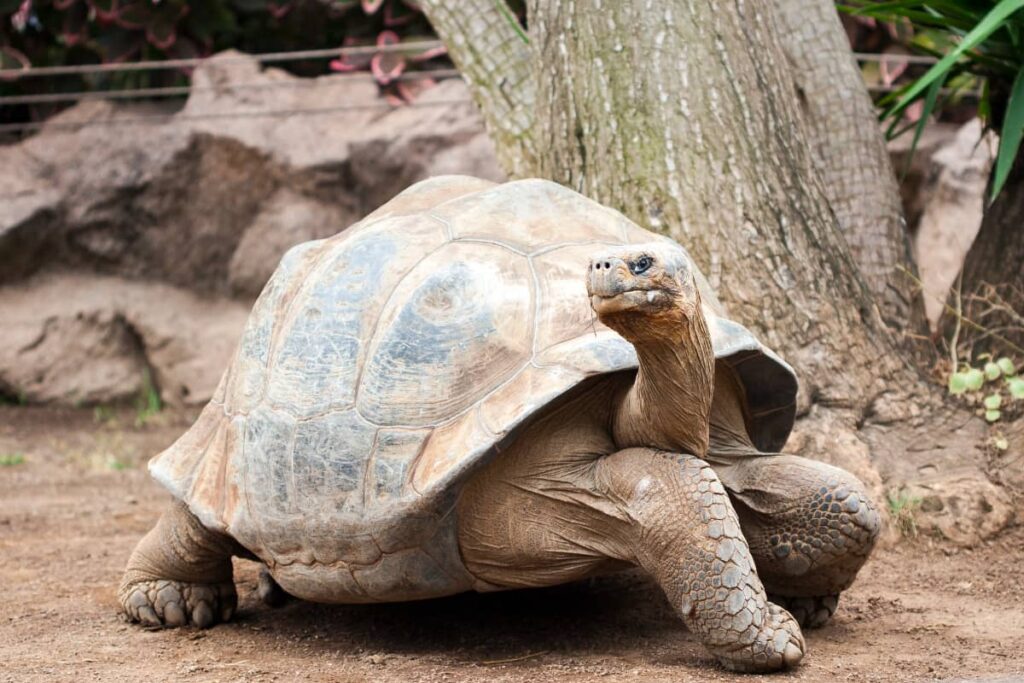San Cristóbal Island
San Cristóbal Island is a treasured gem in the Galápagos Archipelago, known for its rich biodiversity and stunning landscapes. Travelers flock to this island, drawn by its unique wildlife and captivating natural beauty, making it a crucial hub for ecotourism.
Understanding San Cristóbal means appreciating its history, diverse ecosystem, and ongoing conservation challenges. As one of the first islands discovered by Charles Darwin, it is steeped in significance, showcasing an array of activities that highlight its unique charm. It's also the second most-populated island of the Galapagos, with around 6,000 residents calling it home.
San Cristóbal Fast Facts
- Natural Wonders: Stunning marine life and pristine beaches - some of which have good waves for surfing.
- Unique Wildlife: Giant tortoises can be found in the sanctuary and visitors can witness the spectacular flight of various birds. Cerro Brujo provides more than just scenic beauty with its rich biodiversity.
- Accessibility: With daily flights available to the island, reaching San Cristóbal is convenient for travelers. There are also boats and cruises that connect the island with other Galápagos islands, making it easy to combine visits.
- Cultural importance: Learn about the cultural and historical significance by visiting interesting sites around the island.

Activity Highlights
With a mix of outdoor activities, fascinating wildlife, and stunning scenery, San Cristóbal is a true paradise for explorers.
- Kicker Rock: A haven for snorkelers and divers, this site offers encounters with ocean life like reef and hammerhead sharks, sea turtles, and colorful fish.
- Interpretation Center: Learn about the island’s past, including its history as a penal colony and its unique ecosystems.
- Cerro Brujo: Known for its beautiful beaches, it provides opportunities for wildlife viewing, including sightings of blue-footed boobies and sea lions.
- El Junco: Visit the island's rare freshwater lake, surrounded by lush vegetation and frequented by unique wildlife.
- Galapaguera de Cerro Colorado: This breeding center provides a chance to see giant tortoises up close in a protected habitat.
- Isla Lobos: Ideal for spotting playful sea lions and enjoying bird watching.
Animal Highlights
A must-visit for wildlife enthusiasts. Visitors typically come to see a variety of unique animals, whether native to the land or the surrounding seas.
Animals to Spot:
- Blue-footed Booby: Easily recognized by their strikingly vibrant blue feet.
- Giant Tortoises: These ancient reptiles are a symbol of the Galápagos.
- Frigate Birds: Grace the skies with their magnificent wingspan.
- Sea Lions: Commonly found lounging on the beaches, marina benches and frolicking in the water.
- Marine Iguanas: The only sea-going lizards in the world, they adapt remarkably to their aquatic lifestyle.
- Hammerhead Sharks: A thrilling sight for snorkelers and divers around Kicker Rock.
How to visit
You can experience the island by exploring yourself, taking a land-based tour that allows you to explore its natural beauty and attractions on foot, by bike, or via kayak, or you can opt for a cruise (including last minute options) that offers a unique perspective of the stunning coastline and surrounding waters.
Note that you will need to be accompanied by a registered guide when you visit many of the national park areas.
History
San Cristóbal Island, also known as Chatham Island, is a part of Ecuador's Galápagos Islands. Its history begins with its early use as a penal colony, established in the 19th century. This remote location made it an ideal site for prisoners before evolving into a permanent settlement.
The island's strategic position led to the establishment of a military base during World War II. This base played a key part in defending the Pan-American shipping routes. It later helped the island develop their infrastructure.
Famed naturalist Charles Darwin visited the island in 1835, where he studied its unique ecosystem. His observations of the animal life on San Cristóbal contributed to his groundbreaking work on evolution.
Geography
The island's geography is a captivating blend of volcanic landscapes and rich biodiversity, making it a must-visit for nature enthusiasts. It's the easternmost island of the Galapapos archipeligo.
- Area: 558 square kilometers
- Highest Point: 730 meters (Cerro San Joaquin)
- Unique Feature: El Junco, the only fresh water lake in the Galápagos
San Cristobal Island Airport (SCY)
To access San Cristobal Island, you can fly directly to its airport, (SCY), from mainland Ecuador. Flights are available from Quito or Guayaquil, with several airlines offering daily connections.
The airport features a straightforward setup with essential passenger services. Major airlines LATAM and Avianca both fly to the island regularly.
There are also boats and cruises that connect with other Galápagos islands, making it easy to combine visits.
Be sure to check flight schedules in advance due to seasonal demand variation & arrive early for check-in to ensure smooth boarding.

Conservation Challenges
There are numerous conservation projects aimed at preserving its unique ecosystems. Efforts include the protection of giant tortoises and safeguarding the coast from invasive species. Projects are also in place to monitor the habitat of the iconic blue-footed booby. These initiatives are vital for maintaining the island's biodiversity.
Challenges for these projects are numerous. Human activities and climate change continue to disturb the fragile balance of ecosystems. Waste management remains a significant issue for the permanent settlement areas like Puerto Baquerizo Moreno.
Efforts are underway to tackle these challenges with community involvement and regulatory frameworks. However, balancing tourism growth with conservation is challenging, especially with daily air travel boosting tourist numbers. Addressing these issues requires ongoing collaboration between locals, scientists, and authorities.
International partnerships are crucial for sustainable solutions. These partnerships bring together expertise, resources, and innovative strategies from different countries and organizations, enabling a more holistic approach to conservation. Additionally, international collaboration helps to raise awareness and mobilize global support for these critical conservation efforts.
Economy
The economy is largely driven by tourism, which thrives due to its unique biodiversity and status as one of the most iconic destinations in the world for nature enthusiasts. As a result, tourism generates significant revenue through services such as guided tours, accommodations, restaurants, and recreational activities.
Fishing is another pillar of the island's economy, providing jobs and food for the local population. The surrounding waters are ideal for sustainable fishing practices. Fishing cooperatives on the island help manage resources and support the local community.
Agriculture plays a smaller role but remains vital for local consumption. The fertile volcanic soil supports various crops, complementing imported goods. The island's agricultural activities mainly focus on crops such as bananas, tomatoes, and coffee, along with other fruits and vegetables. You can find this produce at the local market, along with fresh seafood such as tuna.
Climate
The climate is tropical. The rainy season from December to May brings warmer temperatures, averaging around 25-30°C (77-86°F), and occasional showers. During the dry season from June to November, temperatures are milder, ranging from 18-24°C (64-75°F), and skies tend to be cloudier, with cooler ocean currents influencing the weather.
The climate can be broken down into two primary seasons:
Rainy Season (Dec - May):
- Average Temperature: 25-30°C (77-86°F)
- Occasional showers
Dry Season (Jun - Nov):
- Average Temperature: 18-24°C (64-75°F)
- Cloudier skies
- Cooler ocean currents
Activities & Experiences
Many diverse interests are catered for, with activities ranging from wildlife observation to cultural visits. Whether you're a nature enthusiast or a history buff, engaging experiences for every traveler are on offer.
Sea Lion Colony
A visit to the sea lion colony is a must and is one of the easiest attractions to access as you cannot miss the sea lions on the malecon and beaches of Puerto Baquerizo Moreno. Here, you can witness sea lions in their natural habitat, relaxing or frolicking along the shores. It’s an incredible opportunity for wildlife enthusiasts and photographers alike. Just be sure not to get too close. A popular place to view them is Playa Mann, which has a good beach and relatively calm water with some nearby restaurants.
Interpretation Center
The Interpretation Center provides a comprehensive overview of the Galápagos Islands' ecology, history, and conservation efforts. Interactive exhibits make it an informative stop for visitors. It's conveniently located near the capital.

Frigatebird Hill
Frigatebird Hill offers a chance to observe these magnificent birds up close. Known for their striking appearance, these birds are a highlight for bird watchers. The trail to the hill also offers stunning views of the coastline.
Isla Lobos
Isla Lobos, near San Cristóbal, is a biodiverse haven ideal for snorkeling and wildlife viewing. Visitors can expect encounters with sea lions, various sea bird species, and possibly marine iguanas. Short boat trips make access to this island convenient.
Puerto Baquerizo Moreno (Town)
The capital city of the Galapagos is the hub of Puerto Baquerizo Moreno. With its shops, restaurants, and cultural spots, it’s perfect for exploring local lifestyle. It also serves as a starting point for various island tours.
El Progreso (Town)
El Progreso is a quaint town steeped in history, known for being a former penal colony. Visitors can explore its historical landmarks and learn about its past. It offers a more tranquil side of island life.
Kicker Rock / León Dormido
Kicker Rock, also known as León Dormido, is iconic for its dramatic cliffs rising from the sea. It’s a renowned dive and snorkel site offering encounters with sharks, rays, and diverse fish. The breathtaking views make it a favorite for photographers.
Ochoa Beach
Ochoa Beach is a serene spot perfect for relaxation and wildlife viewing. The white sand beaches are complemented by turquoise waters. Visitors might spot sea lions lounging on the shore!
Cerro Brujo
The most well known beach and volcanic landscape on San Cristóbal. It's a great location for snorkeling and exploring unique rock formations. Its picturesque scenery is ideal for leisurely walks and photography.
Playa Lobería
Playa Lobería enchants visitors with its golden sands and crystal-clear waters, perfect for relaxation and sunbathing. It's an excellent spot for snorkeling and swimming, allowing exploration of vibrant marine life. The beach is also home to a lively sea lion colony. It's also one of the most popular hikes from the Baquerizo Moreno and a popular spot for surfers.
Sapho Bay (Puerto Grande)
Sapho Bay, also known as Puerto Grande, is a hidden gem on the island. Its calm waters and picturesque coastline are perfect for picnicking and swimming. It's an excellent spot for those seeking a quiet retreat.
Tortoise Reserve
The Tortoise Reserve is dedicated to the conservation of Galapagos giant tortoises, providing a sanctuary for these ancient creatures. Visitors can learn about conservation efforts while observing tortoises in their natural environment. It’s an educational experience for all ages.
Punta Pitt
Punta Pitt is unique for allowing visitors to see all three booby species in one area. This remarkable site is accessible via a guided hike. The area also offers spectacular views of the surrounding landscape.
El Junco Lagoon
El Junco Lagoon is a rare freshwater lake that’s home to diverse bird species. A trail around the lagoon provides panoramic views and ample bird-watching opportunities. It’s a peaceful spot for nature lovers.
Puerto Chino
Puerto Chino is a beautiful, secluded beach ideal for relaxing and swimming. Known for its clear waters and pristine environment, it offers a tranquil escape. It’s also a great spot for observing local birdlife.
Animal Encounters
Here's a non-exhaustive list of animals found around San Cristóbal:
Mammals
- Galápagos Sea Lion (Zalophus wollebaeki): Commonly seen lounging on beaches and docks.
- Galápagos Fur Seal (Arctocephalus galapagoensis): Less prevalent than sea lions, often found in rocky areas.
- Dolphins: Species such as bottlenose dolphins are frequently spotted in surrounding waters.
- Whales: Occasional sightings of species like Bryde's whales.

Reptiles
- Giant Tortoise (Chelonoidis chathamensis): The San Cristóbal species can be observed at the Galapaguera breeding center.
- Marine Iguana (Amblyrhynchus cristatus): Often seen basking on lava rocks near the coast.
- San Cristóbal Lava Lizard (Microlophus bivittatus): Endemic to the island, these small lizards are widespread.
- Geckos: Various species inhabit the island.
Birds
- Blue-Footed Booby (Sula nebouxii): Known for their distinctive blue feet and unique mating dance.
- Red-Footed Booby (Sula sula): Nests in colonies, often in trees or shrubs.
- Magnificent Frigatebird (Fregata magnificens): Males display bright red throat pouches during mating season.
- Great Frigatebird (Fregata minor): Similar to the magnificent frigatebird, with subtle differences.
- San Cristóbal Mockingbird (Mimus melanotis): Endemic to the island, recognized by its distinctive song.
- Darwin's Finches: Several species present, each with unique beak adaptations.
- Swallow-Tailed Gull (Creagrus furcatus): Notable for their nocturnal feeding habits.
- Tropicbirds: Graceful seabirds with elongated tail feathers.
Fish and Underwater Life
- Manta Rays: Graceful swimmers often seen in surrounding waters.
- Sea Turtles: Green sea turtles are commonly observed, especially during nesting season.
- Sharks: Species like reef sharks and hammerheads can be spotted by divers and snorkelers.
- Various Pelagic Fish: Including tuna and jacks.
Travel Tips and Practical Information
- Accommodation: Options range from budget hostels to luxury hotels, primarily in Puerto Baquerizo Moreno.
- Transportation: Taxis and bicycles are popular for navigating the island. Renting a bike offers a flexible and eco-friendly way to explore.
- Currency: The US dollar is the official currency, simplifying transactions for US visitors. Credit cards are accepted in some places, but it's wise to carry cash. There are a small number of ATMs on the island, but international visitors may find that they quickly reach their daily withdrawal limit. We recommend bringing sufficient cash with you.
- Local Cuisine: Enjoy fresh seafood and traditional Ecuadorian dishes. Don't miss the chance to try ceviche, a local favorite.
Ready to explore the islands for yourself? First time visiting Galapagos? We highly recommend starting with a guide!

